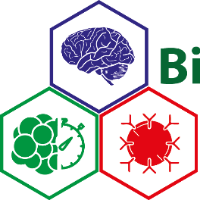The pallium of teleosts is a brain structure implicated in different forms of cognitive learning. Experimental data have shown that learning and memory systems are more conserved throughout evolution than previously thought, with teleost fish relying on homologous neural substrates for learning and memory processes as mammals. For example, molecular and behavioral studies in teleosts suggest that the telencephalic dorsomedial (Dm) region shares homology with the basolateral amygdala of mammals, whereas the dorsolateral (Dl) telencephalic region shares homology with the mammalian hippocampus. Preliminary results from our group indicate that the functionality of pallial sub-structures is not homogeneous along the rostrocaudal axis. Moreover, little is know about the connectivity between different pallial circuits, whereas a few studies demonstrated glutamatergic connections between Dl and Dm in pallial slice preparations at the medial rostrocaudal level. In this work, we combine a whole-brain ex vivo preparation with field electrophysiological recordings and calcium imaging to characterize connectivity between different pallial circuits along the rostrocaudal axis. Our preliminary data, validate the Dl to Dm glutamatergic connectivity at the medial level of the rostrocaudal axis. Furthermore, we have evidence for an undescribed glutamatergic connection between the caudal Dl and rostral Dm.
P#186
Assessing connectivity in the adult zebrafish pallium
Julio Roberto Castillo Elias
- San Carlos de Bariloche,
- Argentina
- Julio Castillo ¹
- , Lucas Mongiat ²
- 1 Balseiro Institute
- 2 Medical Physics Department, Centro Atómico Bariloche

